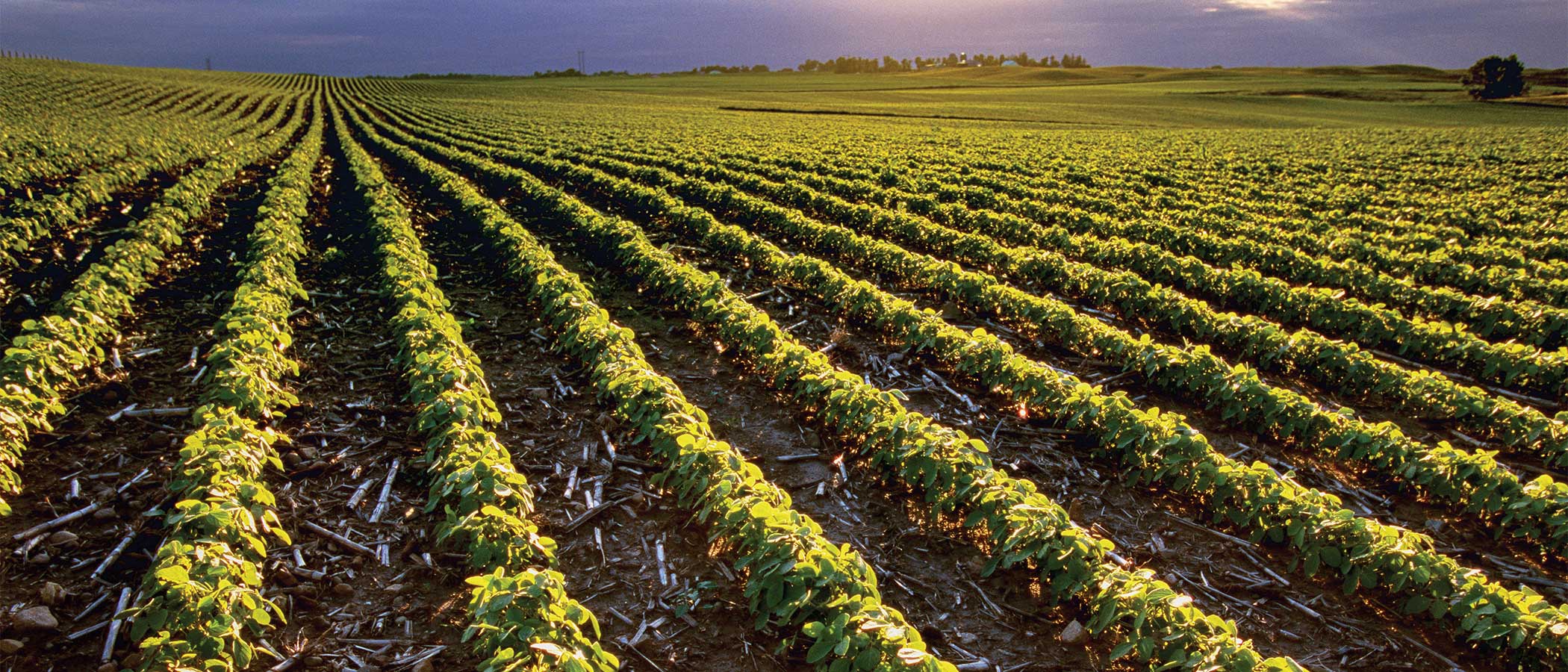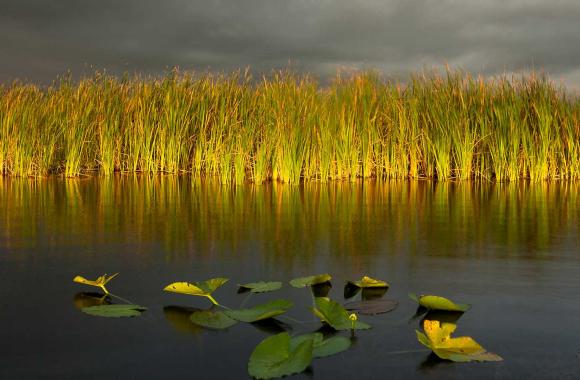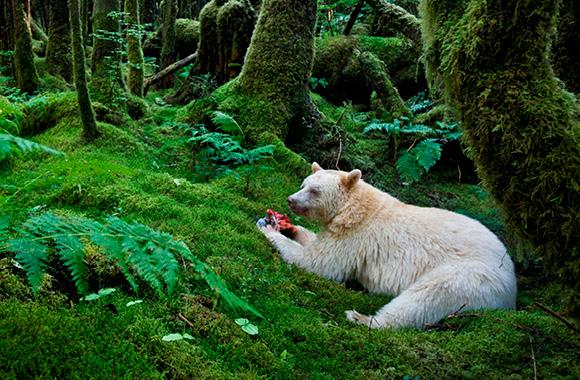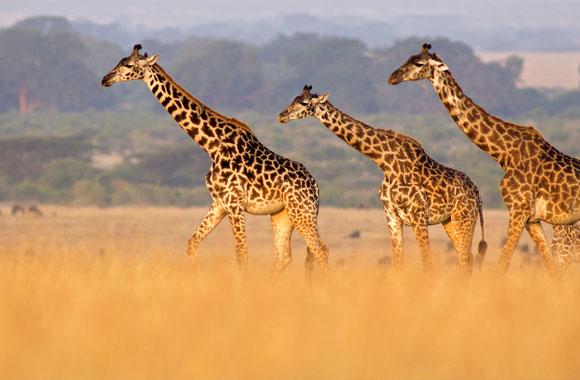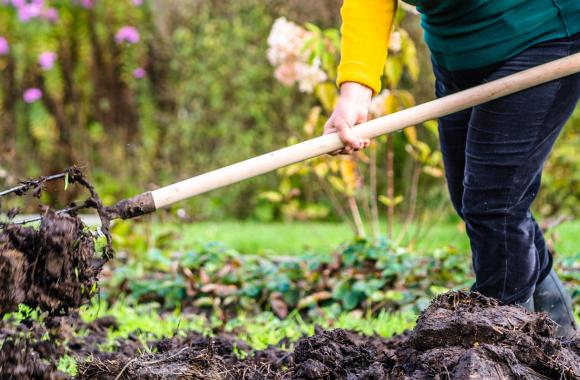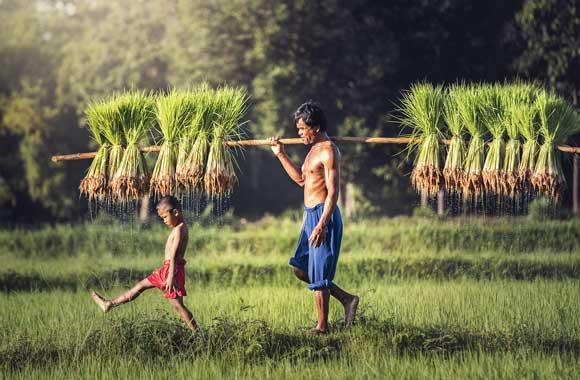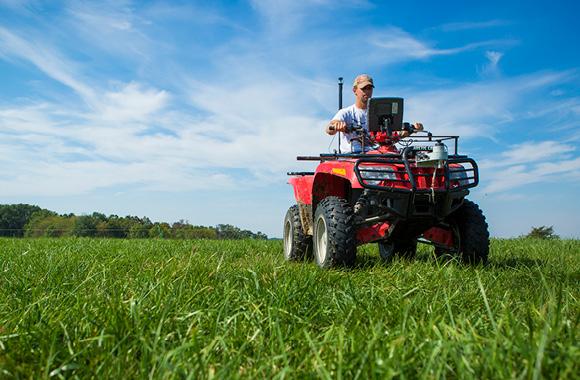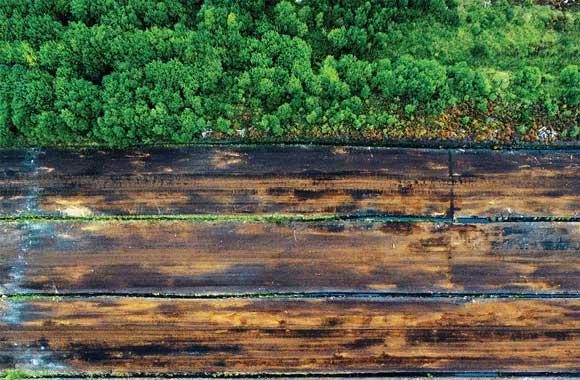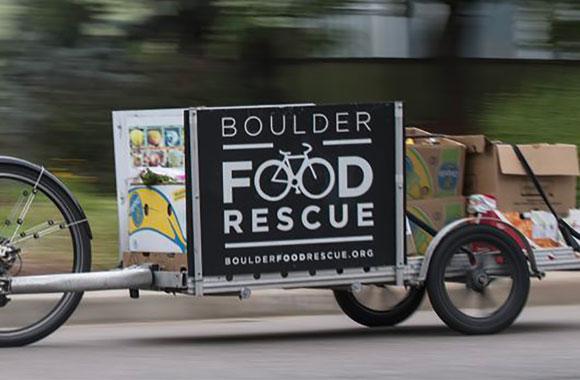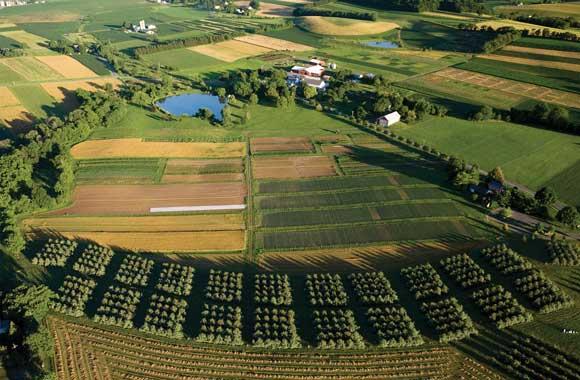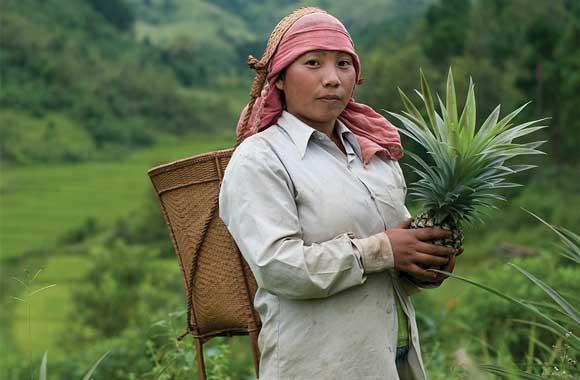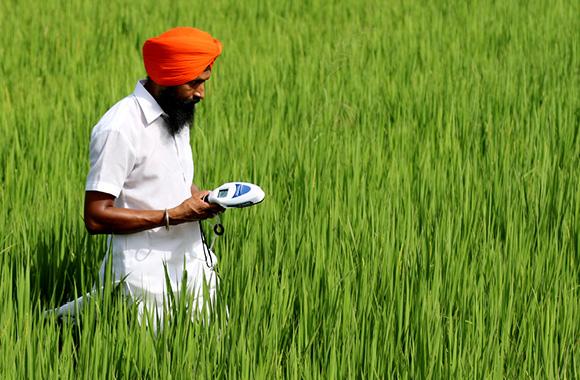Conservation Agriculture
Conservation agriculture uses cover crops, crop rotation, and minimal tilling to produce annual crops. It protects soil, avoids emissions, and sequesters carbon.
Reduced/Sequestered
2020–2050
To Implement
Operational Savings
Impact
Based on historic growth of large farming operations, we project the total area under conservation agriculture will increase from 148 million hectares to peak at 400–327 million hectares by 2035. We assume that as regenerative annual cropping becomes more widely used, farms that have already adopted conservation agriculture will convert to these more effective soil fertility practices in response to consumer demand for fewer harmful herbicides. The benefits of that conversion are counted by the Regenerative Annual Cropping solution. Nonetheless, conservation agriculture will continue to offer significant benefits, reducing carbon dioxide equivalent emissions by 12.81–8.08 gigatons based on average carbon sequestration rates of 0.25–0.78 metric tons of carbon per hectare per year, depending on the region. Establishment costs are low at US$89.78–56.85 billion with a lifetime net operational savings of US$2.52–1.58 trillion and lifetime net profit of US$99.10–61.55 billion.
Introduction
When farmers till their fields to destroy weeds and fold in fertilizer, water in the freshly turned soil evaporates. Soil itself can be blown or washed away and carbon held within it released into the atmosphere. Tilling can make a field nutrient poor and less life-giving.
Project Drawdown’s Conservation Agriculture solution uses crop rotation, cover cropping, and reduced tillage to reduce emissions and sequester greenhouse gases while producing annual crops such as wheat and maize. This solution replaces conventional annual cropping systems.
The three key elements of conservation agriculture are minimizing soil disturbance, protecting soil with vegetation, and varying crops from year to year. Because conservation agriculture not only reduces greenhouse gas concentrations in the atmosphere but also makes land more resilient to climate-related events such as long droughts and heavy downpours, it is doubly valuable in a warming world.
Methodology
We modeled conservation agriculture as a bridge to regenerative annual cropping, which includes more than one practice (compost application, organic farming, or green manure use). The soil health movement, the International Federation of Organic Movements’ “Organic 3.0,” and the many farmers working to implement organic no-till agriculture are all evidence that this transition is underway.
Total Land Area
To evaluate the extent to which a Food, Agriculture, and Land Use sector solution can reduce greenhouse gas emissions and sequester carbon, we need to identify the total land area available for that solution in millions of hectares. To avoid double counting, we use an integration model that allocates land area among all Food, Agriculture, and Land Use sector solutions. This involves two steps. First, we classify the global land area into agro-ecological zones (AEZs) based on the land cover, soil quality, and slope and assign AEZs to different thermal moisture regimes. We then classify the AEZs into “degraded” and “nondegraded.” Finally, we allocate the solutions to AEZs, with the solution most suited to a given AEZ or sets of AEZs assigned first, followed by the second-most-suited solution, and so on. Because it’s hard to predict future changes, we assume the total land area remains constant.
We allocated 685 million hectares of nondegraded croplands with minimal slopes to the Conservation Agriculture and Regenerative Annual Cropping solutions together, allocated them differently under different scenarios. In all scenarios, the Conservation Agriculture solution grows until at least 2030 and then starts declining, but never shrinks below its 2018 rate of 148 million hectares.
Adoption Scenarios
We developed six custom adoption scenarios for the Conservation Agriculture solution. All begin with current adoption of 148 million hectares. Some use the current global adoption rate of 0.36 percent per year, while others use 1.24 percent, which is the rate from South America, the region with the highest rate. The conservative scenarios assume adoption will continue through 2050, while the aggressive scenarios assume that the adoption of the Conservation Agriculture solution will peak by 2030 and begin to decline as land area under conservation agriculture converts to regenerative annual cropping due to increasing demand for organic and semi-organic agricultural products.
We calculated impacts of increased adoption of the Conservation Agriculture solution from 2020 to 2050 by comparing two growth scenarios with a reference scenario in which the market share was fixed at current levels.
- Scenario 1: The land area under conservation agriculture peaks at 407 million hectares by 2039 and then declines to 373 million hectares by 2050. The 34 million hectares lost from conservation agriculture are converted to regenerative agriculture. Total adoption in 2050 is 344.00 million hectares, representing 50 percent of the total available land.
- Scenario 2: The land area under conservation agriculture peaks at 332 million hectares by 2039 and then declines to 303 million hectares by 2050. The 29 million hectares lost from conservation agriculture are converted to regenerative annual cropping. Total adoption in 2050 is 270.75 million hectares, representing 40 percent of the total available land.
For most solutions, adoption increases from Scenario 1 to Scenario 2; however, this is not the case for the Conservation Agriculture solution, due to its transition to regenerative annual cropping.
Emissions, Sequestration, and Yield Model
We set sequestration rates at 0.78, 0.38, 0.61, and 0.25 metric tons of carbon per hectare per year for tropical humid, temperate/boreal humid, tropical semi-arid, and temperate/boreal semi-arid zones, respectively. These are the result of a meta-analysis of 59 data points from 40 sources. We set emissions reduction rates from conservation agriculture at 0.23 metric tons of carbon dioxide equivalent per hectare per year, based on meta-analysis of 14 data points from seven sources.
We set yield 6 percent higher than that for conventional, based on meta-analysis of 12 data points from five sources.
Financial Model
All monetary values are presented in 2014 US$.
We used meta-analysis to determine financial inputs. We estimated first costs at US$355.05 per hectare; for all agricultural solutions, we assume that there is no first cost, because agriculture is already in place on the land. Net profit was US$530.39 per hectare per year (based on meta-analysis of 19 data points from six sources), compared with US$474.21 per year for the conventional practice (based on 36 data points from 19 sources). The operational cost was US$599.03 per hectare per year (based on 17 data points from four sources), compared with US$943.57 per year for the conventional practice (based on the 30 data points from 12 sources).
Integration
Our Agro-Ecological Zone model allocates adoption of solutions to the planet’s forest, grassland, rain-fed cropland, and irrigated cropland areas. Adoption of the Conservation Agriculture solution was constrained by limiting adoption on sloping cropland, competition with rice solutions, and competition with the higher-priority Regenerative Annual Cropping solution. We assigned the combined Conservation Agriculture / Regenerative Annual Cropping solutions third-level priority for nondegraded cropland of minimal slopes. Only rice-based solutions were more highly prioritized.
Results
Scenario 1 reduces greenhouse gas emissions by 12.81 gigatons of carbon dioxide equivalent. The net first cost to implement is US$89.78 billion, lifetime net profit is US$99.10 billion, and lifetime net operational savings are US$2.52 trillion. Yield of annual crops increased to 1,398 million metric tons between 2020 and 2050.
Scenario 2 reduces greenhouse gas emissions by 8.08 gigatons of carbon dioxide equivalent. Net first cost to implement is US$56.85 billion, lifetime net profit is US$61.55 billion, and lifetime net operational savings are US$1.58 trillion. Yield of annual crops under conservation agriculture increased to 882 million metric tons between 2020 and 2050.
Discussion
Benchmarks
The greenhouse gas mitigation impact we calculated for our Conservation Agriculture solution is somewhat higher than Intergovernmental Panel on Climate Change (IPCC) benchmarks, which estimated 0.8 gigatons of carbon dioxide equivalent per year by 2030 for cropland management, excluding rice and agroforestry (Smith, 2007). Griscom et al. (2017) calculated 0.31–0.52 gigatons of carbon dioxide equivalent per year in 2030 for cover cropping. Our model showed 0.3–0.5 gigatons carbon dioxide equivalent per year by 2030 for our Conservation Agriculture solution and 0.5–0.7 for our Regenerative Annual Cropping solution, for a combined sequestration rate of 0.86–0.98 gigatons carbon dioxide equivalent per year in 2030.
Limitations
This study was constrained by limited access to financial data at the farm, regional, and global levels. Future work should include collecting additional data on first costs and net profit per hectare.
Conclusions
Conservation agriculture is already a potent global force for climate change mitigation. Our model builds on this success, and projects evolution and improvement in the practice (in the form of regenerative agriculture) to keep it a critical climate change mitigation strategy into the future.
References
Griscom, Bronson W., Justin Adams, Peter W. Ellis, Richard A. Houghton, Guy Lomax, Daniela A. Miteva, William H. Schlesinger, et al. 2017. “Natural Climate Solutions.” Proceedings of the National Academy of Sciences 114 (44): 11645–50. https://doi.org/10.1073/pnas.1710465114.
Smith, P. D., Z. Martino, D Cai, and H Gwary. 2007. “Agriculture.” In Climate Change 2007: Mitigation of Climate Change: Contribution of Working Group III to the Fourth Assessment Report of the Intergovernmental Panel on Climate Change, edited by Bert Metz. Cambridge ; New York: Cambridge University Press. http://www.ipcc.ch/pdf/assessmentreport/ar4/wg3/ar4-wg3-chapter8.pdf.
What You Can Do
Read a picture book about soil to a child in your life.
Post a photo of a reduced-tillage farm field to your social media with a message thanking the farmer for the climate-friendly practice.
- Expand your knowledge by exploring another Drawdown solution.
Co-benefits
Conservation agriculture improves soil health and reduces nutrient pollution in streams and rivers.

